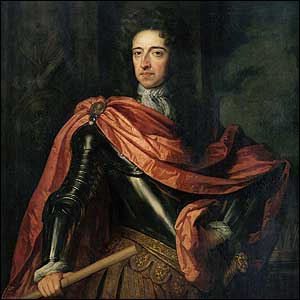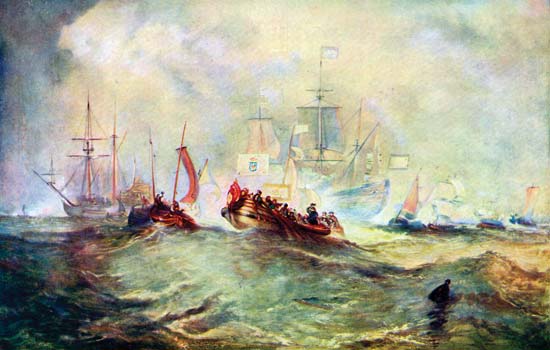The fleet that carried William to England contained 463 ships and 40,000 men. It was almost twice the size of the Armada sent by Philip of Spain one hundred years before. Yet William assembled in a tenth the time.
William's armada landed at Torbay near Brixham, Devon. He stepped onto to English soil on 15 November 1688.
On 28 January 1689, the House of Commons decided by acclamation that James had broken "the original contract"; had "abdicated the government" and had left the throne "vacant". On 23 February (Gregorian), the clerk of the House of Lords read the Declaration of Right, acceptance of which was a condition for the coronation of the new king and Queen. Lord Halifax, in the name of all the estates of the realm, then invited William and Mary to accept the throne. William replied for himself and his wife saying, "we thankfully accept what you have offered us". They were crowned on 11 April, after swearing a coronation oath "to govern the people of this kingdom of England, and the dominions thereunto belonging, according to the statutes in parliament agreed on, and the laws and customs of the same".
William and his queen, Mary, agreed to govern England and its dominions under laws created by the people's representatives. At their coronation, they endorsed Parliament's Declaration of Right. In
doing so they agreed to govern according to law.







